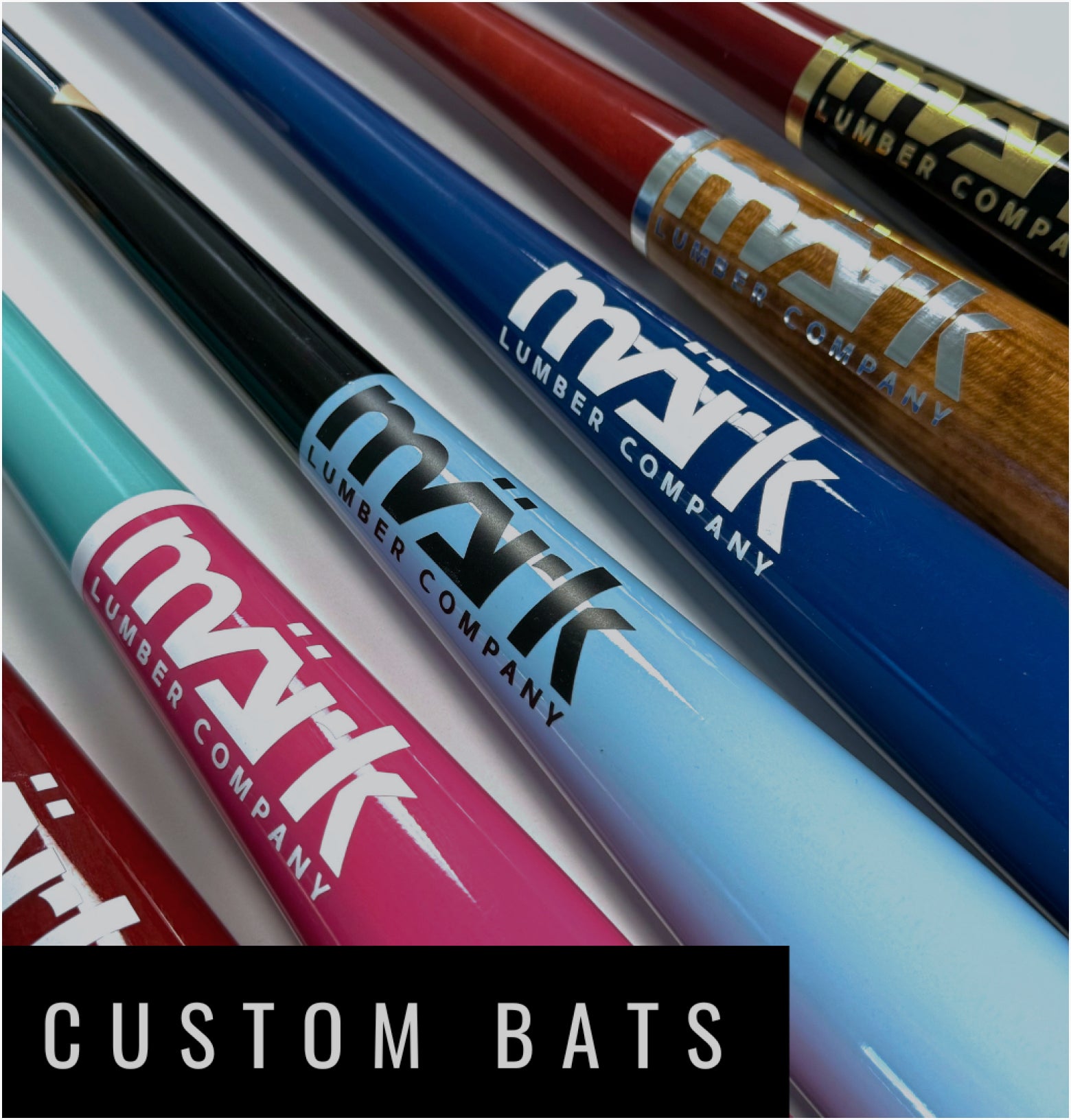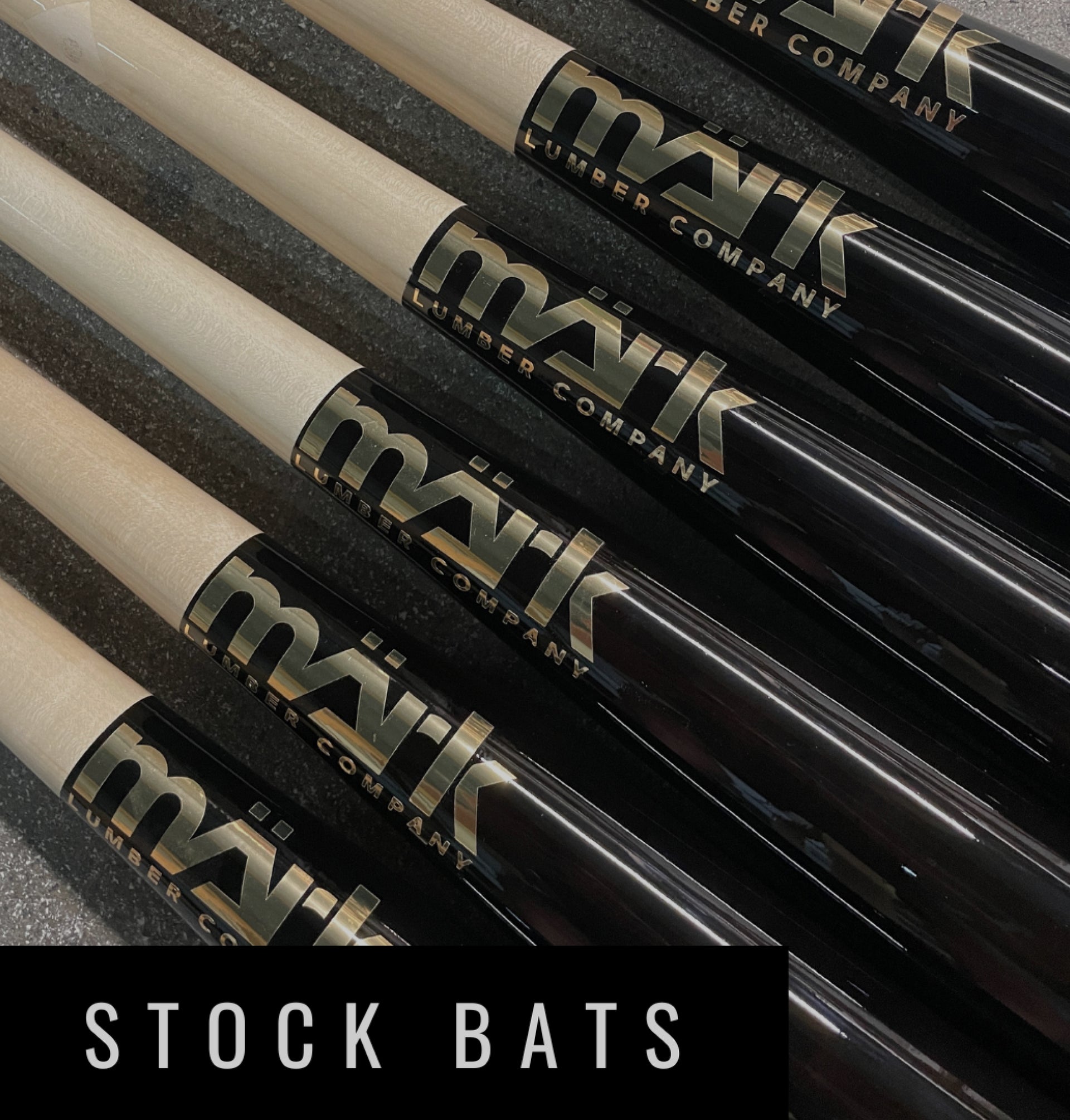
HOW TO SIZE A BASEBALL BAT

CHOOSING THE RIGHT BASEBALL BAT LENGTH
Measure from Your Chest to Fingertips: To begin determining how to size a baseball bat length, start by extending your arm horizontally so it’s parallel to the ground. Measure from the center of your chest to the end of your fingertips. Use this measurement to start finding the proper length of a baseball bat that suits your body and swing style. For additional reference, consult a baseball bat length chart to ensure the measurement aligns with your height and age group.


TYPES OF BASEBALL WOOD BATS
Finding Bat Length by Height: The next tactic can be especially valuable when determining youth baseball bat length, since players are at different stages of growth. While resting the knob of the bat in the center of the palm when standing, the head of the bat should just relax on the floor. This helps identify the ideal length of a baseball bat for comfort and control.
Bat Length by Arm Length: A third technique for measuring baseball bat length starts by placing the bat's handle at the center of your chest. Extend the bat forward; if your arm can reach the barrel, the bat is the appropriate length. Use these simple steps, along with a reliable baseball bat length chart, to fine-tune your choice and find the most effective size for your swing.


CHOOSING THE RIGHT BASEBALL BAT LENGTH
Measure from Your Chest to Fingertips: To begin determining how to size a baseball bat length, start by extending your arm horizontally so it’s parallel to the ground. Measure from the center of your chest to the end of your fingertips. Use this measurement to start finding the proper length of a baseball bat that suits your body and swing style. For additional reference, consult a baseball bat length chart to ensure the measurement aligns with your height and age group.

TYPES OF BASEBALL WOOD BATS
Finding Bat Length by Height: The next tactic can be especially valuable when determining youth baseball bat length, since players are at different stages of growth. While resting the knob of the bat in the center of the palm when standing, the head of the bat should just relax on the floor. This helps identify the ideal length of a baseball bat for comfort and control.
Bat Length by Arm Length: A third technique for measuring baseball bat length starts by placing the bat's handle at the center of your chest. Extend the bat forward; if your arm can reach the barrel, the bat is the appropriate length. Use these simple steps, along with a reliable baseball bat length chart, to fine-tune your choice and find the most effective size for your swing.

When you think of top-tier baseball bats in Canada, MARK LUMBER leads the pack. We turn cold-climate maple into precision tools for serious hitters.
- Hand-selected billets with optimal grain alignment and density
- Crafted in Québec by players who understand feel, torque, and balance
- Consistency and care from start to finish, delivered coast to coast
We don’t just make bats—we preserve a tradition. With every swing, you're holding a piece of Canadian pride and baseball heritage. For the perfect length of a baseball bat and fit, trust the craftsmanship and precision that define every Mark Lumber bat.

FREQUENTLY ASKED QUESTIONS
What are baseball bats made of, and how do materials affect performance?
If you're wondering how to choose the best baseball bats, start by thinking about your swing style, strength, and comfort level. Power hitters tend to benefit from bats with more weight at the barrel (end-loaded), while contact hitters usually prefer lighter, balanced bats for faster swings and better control.
Look at the length of a baseball bat, drop weight, and handle thickness—each of these factors will affect how the bat feels in motion. Material matters too: maple is dense and powerful, ash is flexible and light, and birch offers a blend of both. Testing different models is the best way to know what truly fits.
The best bat isn't just popular—it's the one that helps you swing naturally and confidently, every time you step up to the plate.
Why do serious players train with baseball wood bats?
Proper baseball bat length selection starts with understanding your experience level. If you're a beginner, go for a bat that's lightweight and balanced—this will help you build good habits without overcompensating for weight or control.
Intermediate and advanced players can experiment with heavier or end-loaded bats that match their swing power. Sizing charts based on height and weight are a great starting point, but they're just that—a start. Your stance, swing speed, and hitting goals all matter. Try a few bats to see what feels right in motion.
A properly sized bat should let you swing freely, stay balanced, and hit with confidence. The goal is comfort and control, not just compliance with a baseball bat length chart.
How can I choose the best wood for baseball bats?
Understanding baseball bat length and weight measurements can make all the difference. The two main measurements are length (in inches) and weight (in ounces). The difference between these two numbers is called the drop.
For example, a 30-inch bat that weighs 20 ounces has a drop of -10. The higher the drop, the lighter the bat. Lighter bats are easier to swing and allow for more speed, while heavier bats, typically with lower drops, can offer more power if you can handle the weight.
It's also helpful to know barrel diameter and handle thickness, especially for wood bats, as these affect feel and performance. Knowing your bat's measurements ensures a better fit for your skill level and swing style and helps you determine the ideal length of a baseball bat for your game.
Are baseball bats standardized by league rules?
Finding the right baseball bat length means looking at more than just your height. Your strength, swing speed, and comfort level all come into play. Taller or more muscular players may do well with longer, slightly heavier bats that deliver more reach and power.
Smaller-framed players might benefit from lighter, more balanced options that allow for faster swings and better control. It's also important to consider your hitting style—power hitters may prefer a different setup than contact hitters. Use a baseball bat length chart as a guide, but trust how the bat feels in your hands.
The right size allows for smooth, effortless movement, helping you stay quick through the zone and consistent at the plate.
How do I know if I’m using the best baseball bats for my level?
Baseball bat length varies based on the player's age, size, and swing mechanics. Youth models typically range from 26 to 30 inches, while adult bats commonly fall between 31 and 34 inches.
But there's more to it than age alone. A minor player might struggle with a longer bat, even if it's technically "correct" for their age group. Likewise, a strong teen may benefit from moving up in size early. The key is control—can the player swing the bat comfortably and stay balanced? A good fit allows for a full swing without hesitation.
Charts help, but testing different lengths of a baseball bat in practice is the best way to find what works. A bat that's too long or too short can throw off timing and confidence.





